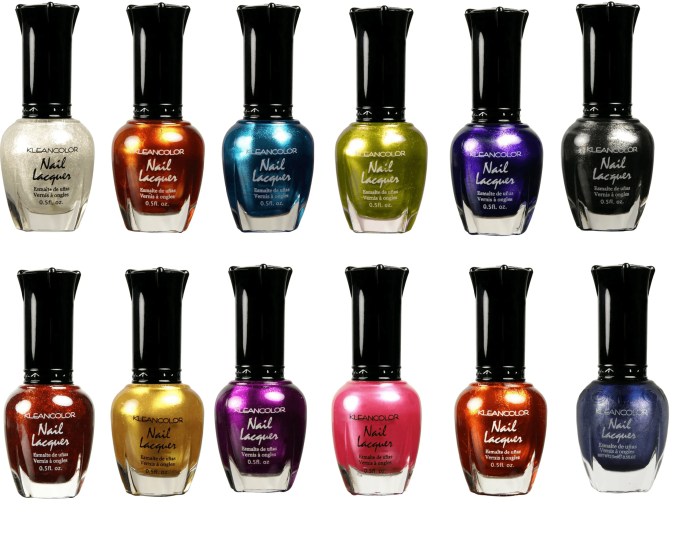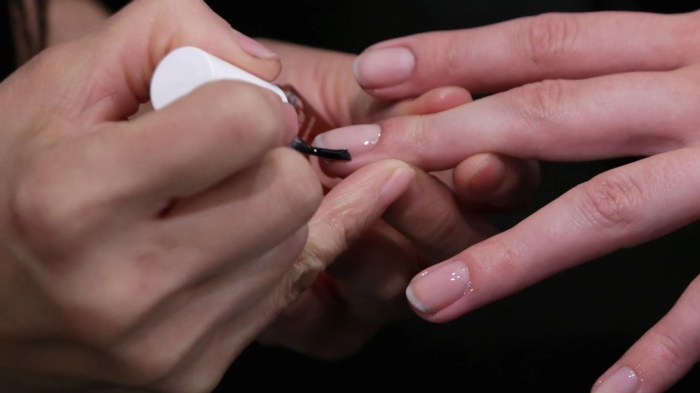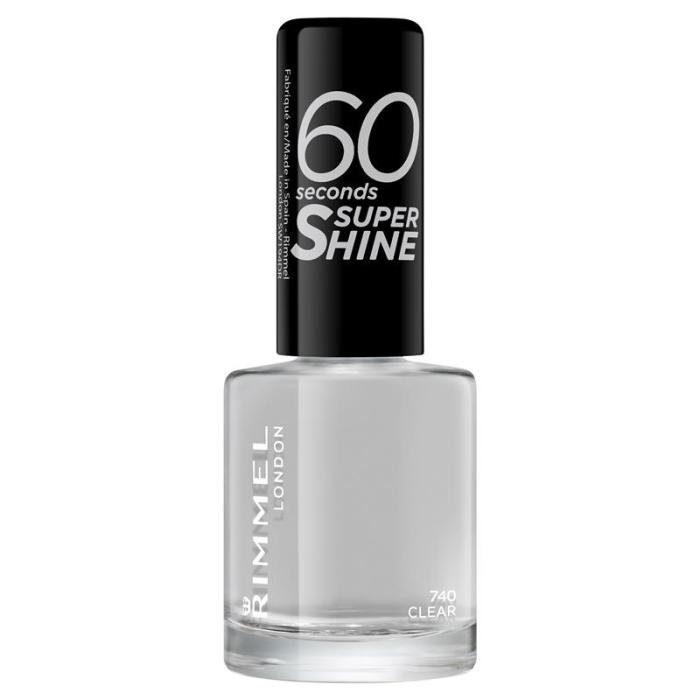Clear Polish on Nails A Comprehensive Guide
Understanding Clear Nail Polish

Source: walmartimages.com
Clear polish on nails – Clear nail polish, often overlooked, plays a vital role in nail care and enhancing the appearance of natural nails. It’s more than just a transparent coat; different formulations offer various benefits, from strengthening and protecting nails to adding shine and extending the life of manicures. This article delves into the diverse world of clear nail polishes, exploring their types, application techniques, benefits, and alternatives.
Types of Clear Nail Polish

Source: co.uk
Several types of clear nail polish cater to different needs and preferences. These variations are primarily driven by their chemical compositions and intended functionalities.
| Type | Key Features | Typical Uses | Chemical Composition (Examples) |
|---|---|---|---|
| Strengthening | Adds durability, prevents breakage | Weak, brittle nails | Often contains nylon, keratin, or other strengthening polymers. Some may include vitamins and minerals for added nourishment. |
| Quick-Drying | Reduces drying time significantly | Busy individuals, impatient users | Typically incorporates solvents that evaporate rapidly, sometimes using specialized polymers that facilitate faster drying. |
| Glossy | Provides a high-shine finish | Adding shine to natural nails, enhancing manicures | Usually contains resins that create a smooth, reflective surface. The specific resins used can affect the level and type of gloss. |
| Matte | Creates a non-shiny, velvety finish | Modern nail art, a different aesthetic | Contains mattifying agents that scatter light, preventing reflection and creating a matte appearance. Silica is a common ingredient. |
Comparing glossy, quick-drying, and strengthening polishes reveals distinct performance differences. Glossy polishes prioritize shine, often at the expense of drying time and strengthening properties. Quick-drying polishes excel in speed but might compromise on durability or shine. Strengthening polishes, conversely, focus on nail health and protection, but may not always provide the same level of shine or quick drying.
Application Techniques
Proper application is crucial for achieving the desired results and maximizing the benefits of clear nail polish.
- Prepare nails: Clean and dry nails thoroughly.
- Apply base coat: A thin, even layer of clear base coat creates a protective barrier and improves adhesion.
- Apply color (if applicable): If using colored polish, apply two thin coats, allowing each to dry completely.
- Apply top coat: A thin layer of clear top coat seals the color and adds shine and durability.
- Allow drying time: Avoid touching nails until completely dry to prevent smudging or chipping.
A visual guide would show the brush positioned at the base of the nail, applying a thin stroke down the center. Subsequent strokes would cover the sides, ensuring even coverage without flooding the cuticles. The brush should be moved smoothly and evenly, avoiding back-and-forth motions which can cause bubbles or streaks. The image would emphasize gentle pressure and controlled movements for a professional-looking finish.
Common mistakes include applying too thick coats, causing bubbling and uneven drying. Using old, thick polish also leads to imperfections. Solutions involve using thin coats, allowing sufficient drying time between coats, and replacing old polish regularly.
Benefits and Uses of Clear Nail Polish
Clear nail polish offers several advantages as a base coat and top coat. It protects natural nails from chipping, staining, and damage caused by everyday activities. As a top coat, it prolongs the life of manicures, adding shine and preventing chipping. Furthermore, it can subtly enhance the natural appearance of healthy nails by adding a touch of shine and smoothing the nail surface.
Choosing the Right Clear Nail Polish
Selecting a high-quality clear nail polish involves considering several factors. Ingredients should be free of harsh chemicals, while longevity and finish should meet individual preferences. The choice depends on whether you prioritize strengthening, shine, quick drying, or a combination.
A decision tree would guide users through questions about their priorities (strength, shine, speed of drying), leading them to the most suitable type of clear nail polish. Price points vary significantly across brands and types, with higher-end brands often offering superior ingredients and longer-lasting results. The value proposition should consider the balance between cost, quality, and performance.
Nail Care and Maintenance with Clear Polish, Clear polish on nails
Maintaining healthy nails while using clear nail polish regularly requires a consistent routine.
- Regularly moisturize cuticles and nails.
- Avoid harsh chemicals and prolonged exposure to water.
- File nails gently in one direction.
- Remove polish gently to avoid damaging the nail.
- Use a base coat and top coat to protect nails.
Proper nail hygiene includes cleaning nails before application and using clean tools. Sanitizing tools before and after use is essential to prevent infection. Removing clear nail polish gently with non-acetone remover prevents damage to the nail plate.
Alternatives to Traditional Clear Nail Polish

Source: com.au
A clear polish on nails offers a sleek, protective finish, enhancing the natural nail’s appearance. For a faster drying time and even more durable shine, consider using a top coat; a good option is a top coat nail polish quick dry to significantly reduce drying time. Ultimately, a clear polish, with or without a quick-drying top coat, keeps your manicure looking its best for longer.
Several alternatives offer similar benefits to clear nail polish, each with its own advantages and disadvantages.
- Nail strengtheners: Often contain ingredients like keratin or nylon to improve nail strength and durability.
- Cuticle oils: Moisturize and condition the cuticles and surrounding skin, promoting nail health.
- Nail hardeners: Form a protective layer over the nail to prevent chipping and breakage.
Comparing these alternatives reveals differences in effectiveness and potential drawbacks. Nail strengtheners may take longer to show results, while cuticle oils primarily focus on hydration. Nail hardeners can sometimes make nails brittle if overused.
| Alternative | Cost | Application Method | Lasting Effects |
|---|---|---|---|
| Nail Strengtheners | Moderate | Similar to nail polish | Gradual improvement over time |
| Cuticle Oils | Low | Direct application to cuticles | Immediate hydration, long-term health benefits |
| Nail Hardeners | Moderate | Similar to nail polish | Immediate protection, potential for brittleness with overuse |
FAQ Guide: Clear Polish On Nails
Does clear nail polish really strengthen nails?
Some clear polishes contain strengthening ingredients like keratin or vitamins, but the effect is often minimal. Their primary benefit is protection from chipping and breakage.
How long does clear nail polish last?
This depends on the quality of the polish and application. High-quality polishes can last up to a week or more with proper care.
Can I use clear nail polish over gel polish?
Generally, no. Regular nail polish isn’t compatible with gel polish and may not adhere properly. Use a gel top coat instead.
How do I remove clear nail polish without damaging my nails?
Use an acetone-free nail polish remover and gently soak cotton pads on your nails. Avoid harsh scrubbing.
















